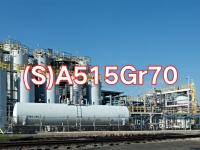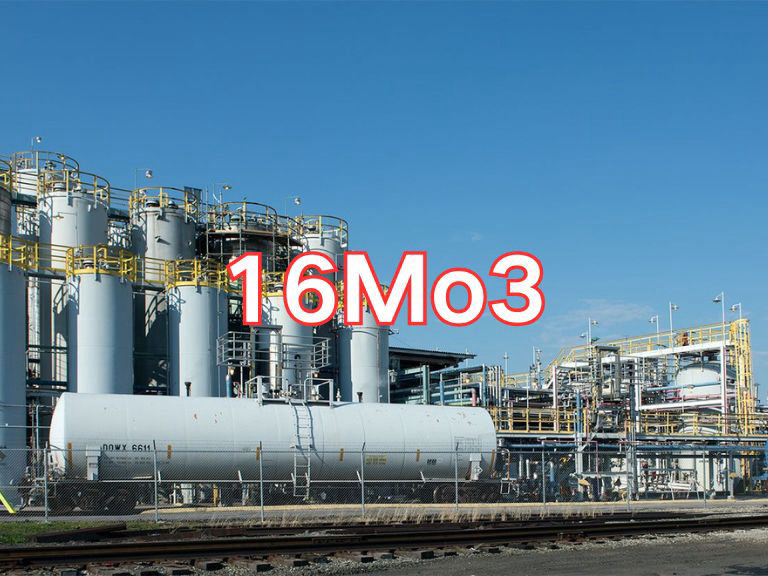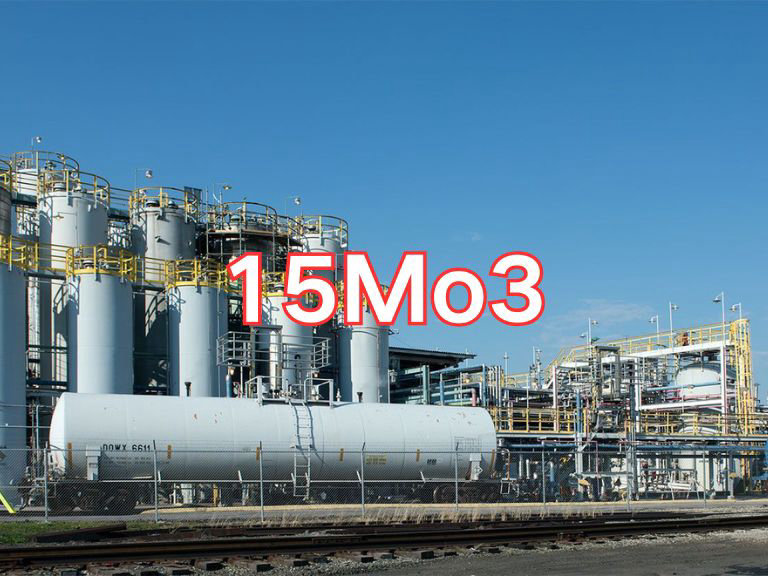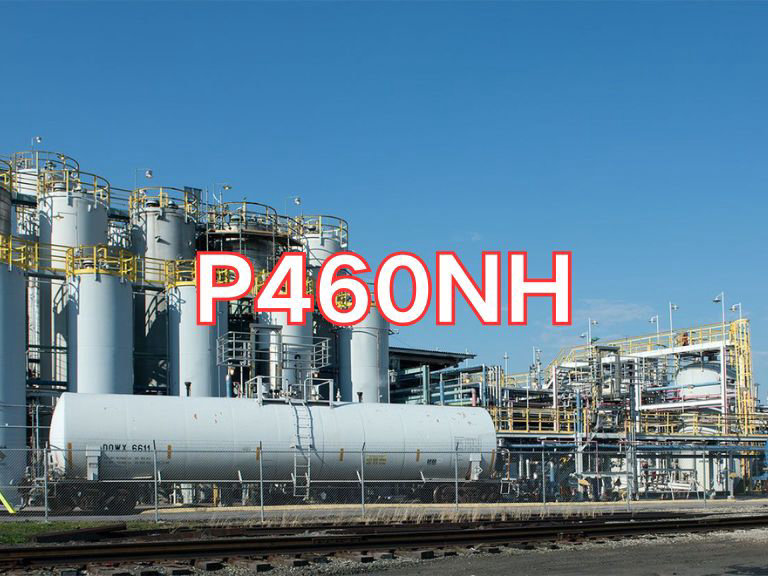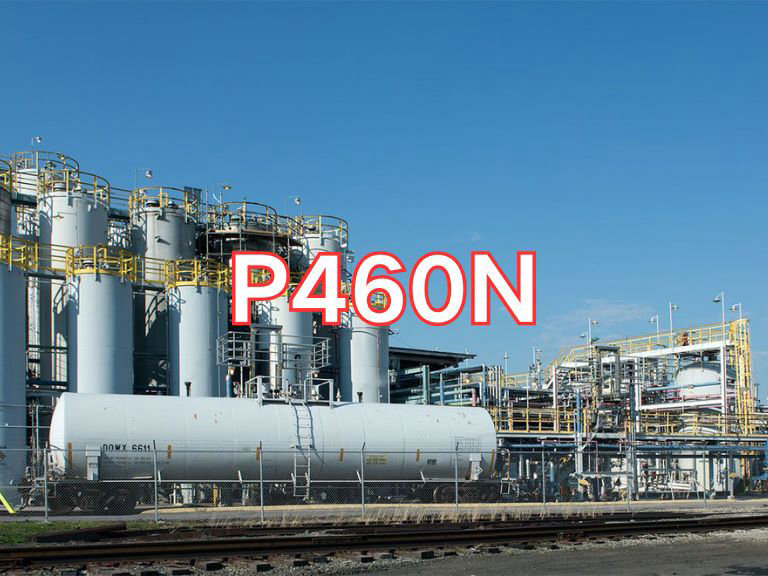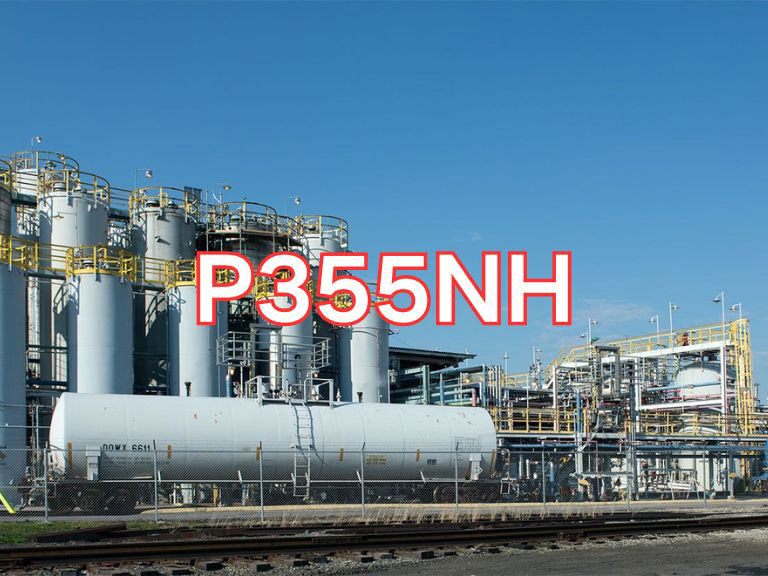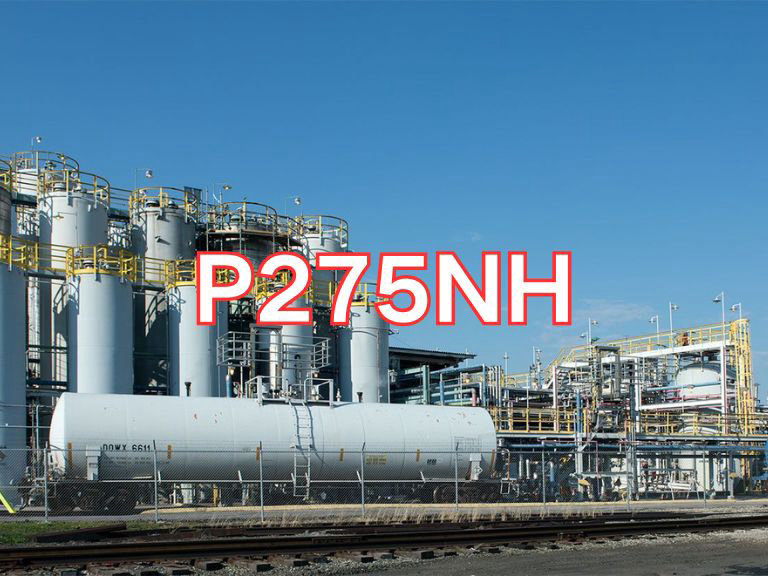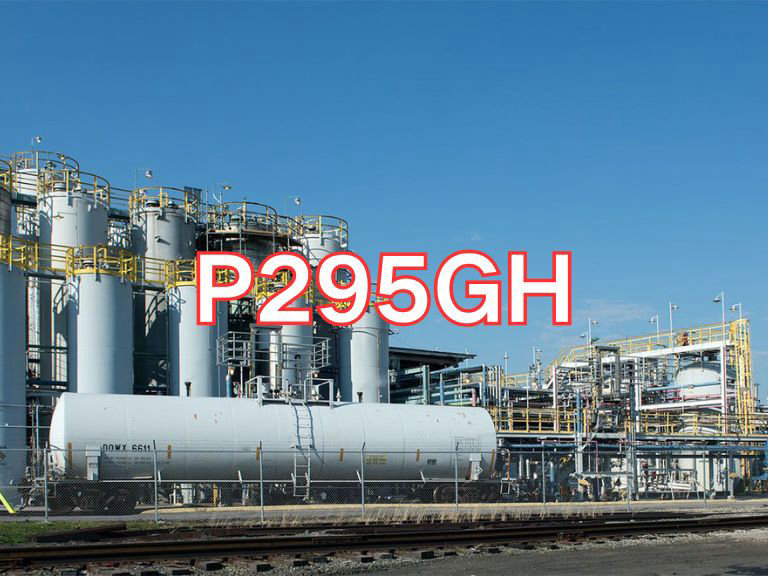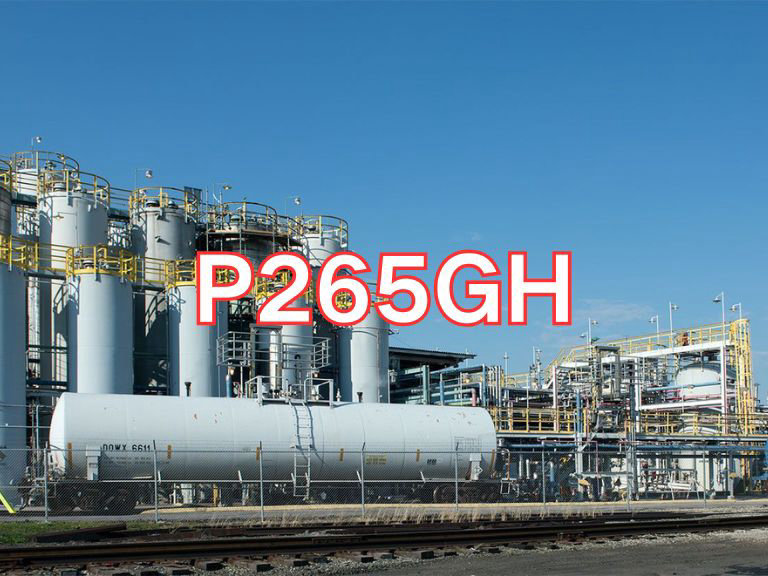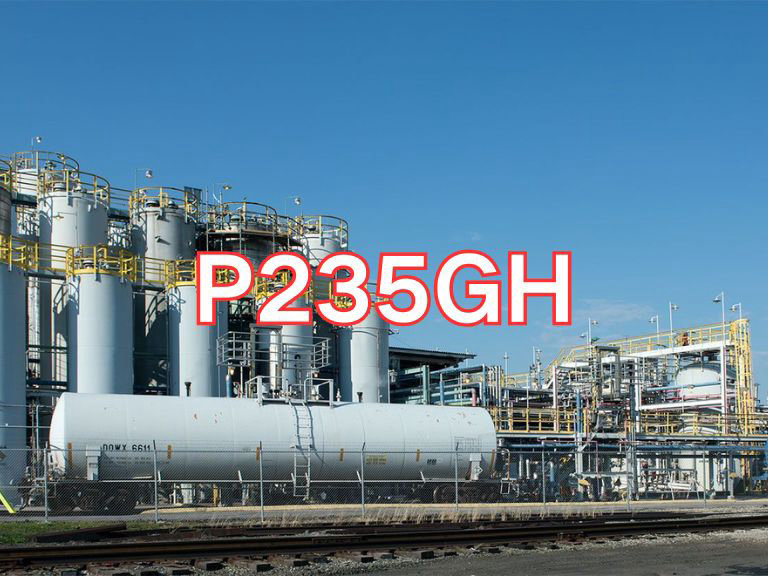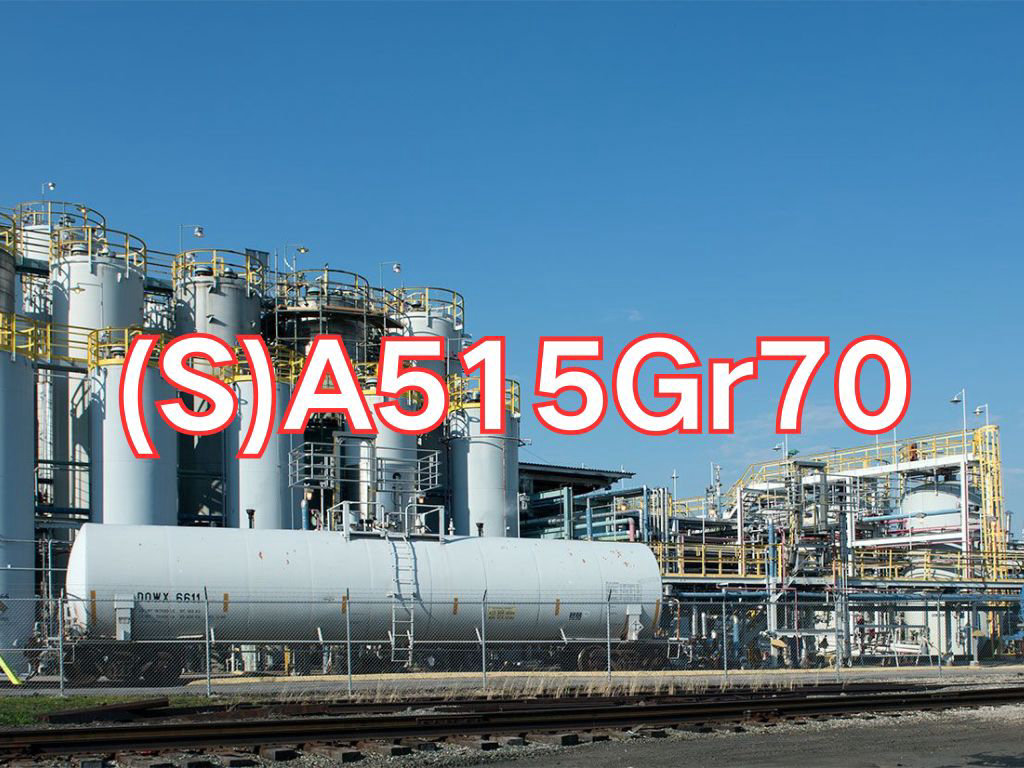

(S)A515Gr70
(S)A515Gr65 or (S)A515 Gr.70 is the highest strength grade in the (S)A515 series, with a minimum tensile strength of 70 ksi (485 MPa) and a yield strength of at least 34 ksi (235 MPa). It provides the greatest structural efficiency, allowing for thinner wall thicknesses and reduced equipment weight in high-pressure service. While still weldable, it typically requires more stringent preheating and post-weld heat treatment to prevent cracking. It is used in critical high-stress components such as high-pressure reactors, steam drums, and heavy-walled vessels operating at elevated temperatures. Its superior strength makes it ideal for demanding applications where space and weight savings are crucial, especially in large-scale petrochemical and power generation facilities.
A general description of the group of (S)A515, in which (S)A515Gr70 is a member, is given as the following:
(S)A515 refers to a series of carbon steel plates designed for pressure vessels operating at intermediate and elevated temperatures. The designation "A515" corresponds to the ASTM standard ASTM A515/A515M, titled "Standard Specification for Pressure Vessel Plates, Carbon Steel, for Intermediate- and Higher-Temperature Service." The prefix "S" indicates compliance with the American Society of Mechanical Engineers (ASME) Boiler and Pressure Vessel Code, making it SA515, which is required for pressure equipment certified under ASME standards. The notation "(S)" is an informal but widely used convention, indicating that the grade applies to both ASTM A515 and ASME SA515, suitable for projects under different design codes. The standard includes three strength grades: Gr.60, Gr.65, and Gr.70, with minimum tensile strengths of 60 ksi (415 MPa), 65 ksi (450 MPa), and 70 ksi (485 MPa), respectively.
(S)A515 steel plates are primarily used in the fabrication of pressure vessels and boiler components operating at intermediate and high temperatures, such as reactor shells, heat exchanger tube sheets, headers, and boiler drums. They are suitable for service temperatures up to approximately 350 °C, making them ideal for applications requiring good strength and moderate creep resistance. Due to their proven performance and broad recognition, (S)A515 grades are widely used in the oil refining, power generation, and chemical industries, particularly in North America and international projects adhering to ASME standards.
Key features of this series include good room- and moderate-temperature strength, with higher grades offering increased strength; excellent weldability using conventional welding processes, typically requiring only moderate preheat and optional post-weld heat treatment; strong formability for cold and hot forming, facilitating rolling, bending, and stamping; and sufficient impact toughness and microstructural stability to ensure long-term safety under elevated-temperature service. Plates are typically supplied in the normalized condition to refine grain structure and enhance mechanical uniformity and performance.
The current applicable standard is ASTM A515/A515M-22 or the corresponding ASME SA-515/SA-515M-22, titled "Standard Specification for Pressure Vessel Plates, Carbon Steel, for Intermediate- and Higher-Temperature Service." Published in 2022, this version specifies requirements for chemical composition, mechanical properties, heat treatment, and non-destructive testing, and serves as the widely accepted technical reference in international engineering projects.
Comparison of (S)A515Gr60, (S)A515Gr65 and (S)A515Gr70
| Item | (S)A515 Gr.60 | (S)A515 Gr.65 | (S)A515 Gr.70 |
|---|---|---|---|
| Standard Designation | ASTM/ASME SA-515/SA-515M | ASTM/ASME SA-515/SA-515M | ASTM/ASME SA-515/SA-515M |
| Grade | Grade 60 | Grade 65 | Grade 70 |
| Minimum Tensile Strength | 60 ksi (415 MPa) | 65 ksi (450 MPa) | 70 ksi (485 MPa) |
| Minimum Yield Strength | 30 ksi (205 MPa) | 32 ksi (220 MPa) | 34 ksi (235 MPa) |
| Elongation (50 mm gauge length, %) | ≥21% | ≥20% | ≥18% |
| Typical Applications | Low-pressure boilers, auxiliary vessels, intermediate-temperature pressure equipment | Medium/high-pressure reactors, heat exchangers, industrial vessels | High-pressure reactors, boiler drums, thick-walled vessels, high-stress components |
| Strength Level | Lowest | Medium | Highest |
| Weldability | Best, minimal preheat required | Good, moderate preheat needed | Weldable but requires strict preheat and post-weld heat treatment |
| Carbon Equivalent | Lowest | Medium | Highest |
| Toughness Performance | Best, superior low-temperature toughness | Good | Relatively lower, but still meets requirements for intermediate temperatures |
| Formability | Best, excellent cold and hot forming | Good | Fair to good, higher process control required |
| Service Temperature Range | ≤ ~350 °C | ≤ ~350 °C | ≤ ~350 °C (recommended ≤345 °C for long-term use) |
| Delivery Condition | Typically normalized | Typically normalized | Typically normalized |
| Main Advantages | Low cost, easy to weld and fabricate | Balanced strength and weldability | High strength allows thinner walls, saving material and weight |
Summary:
All three grades are carbon steel plates for intermediate- and higher-temperature pressure vessels, with similar chemical compositions. The primary differences lie in strength levels and corresponding mechanical properties. As the grade increases, strength improves, while ductility, toughness, and weldability slightly decrease. Selection should be based on design pressure, operating temperature, wall thickness, welding procedures, and fabrication complexity.

Ultrasonic Testing (UT)
A key non-destructive testing technique that uses high-frequency sound waves to detect internal flaws in steel plates. The probe emits sound waves, which reflect when encountering defects such as cracks or inclusions. The receiver captures the echoes, enabling precise determination of defect location and size. With high sensitivity, strong penetration, and fast inspection speed, UT effectively ensures internal quality, widely used in the production of heavy plates, pressure vessel plates, and other high-end products to guarantee safety and reliability.

Magnetic Particle Testing (MT)
A common surface inspection method that magnetizes the workpiece, causing leakage magnetic fields at surface or near-surface defects like cracks or inclusions, which attract magnetic particles to form visible indications. Simple to operate and highly sensitive, MT is suitable for rapid inspection of surface and near-surface flaws in ferromagnetic materials, widely used for online or offline inspection of plate edges, ends, and welds, ensuring product quality and safety.

Penetrant Testing (PT)
A non-destructive method for detecting surface-breaking flaws. A penetrant liquid is applied to the cleaned steel surface, allowing it to seep into defects such as cracks or pores. After removing excess penetrant, a developer is applied, causing the trapped penetrant to bleed out and form visible indications. Simple and cost-effective, PT is suitable for inspecting surface defects in various non-porous materials, commonly used for welds, castings, and complex components, effectively ensuring surface quality of steel plates.

